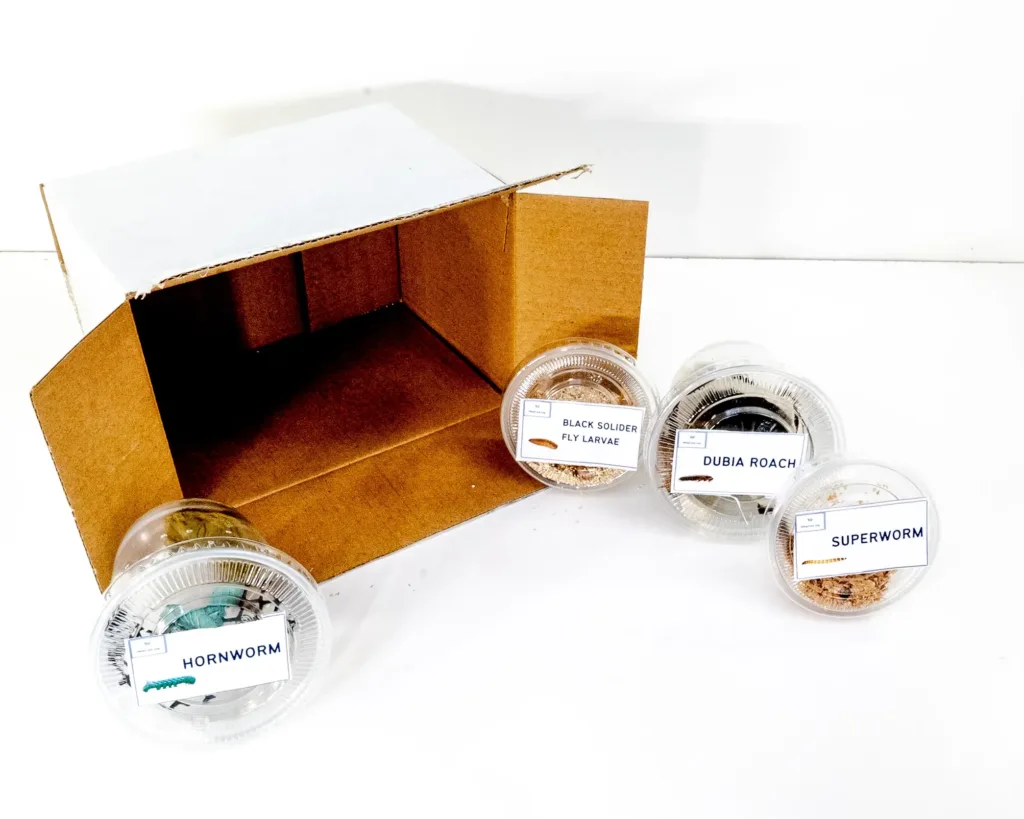What Should I Feed My Baby Bearded Dragon?
A Comprehensive Guide for Beginners
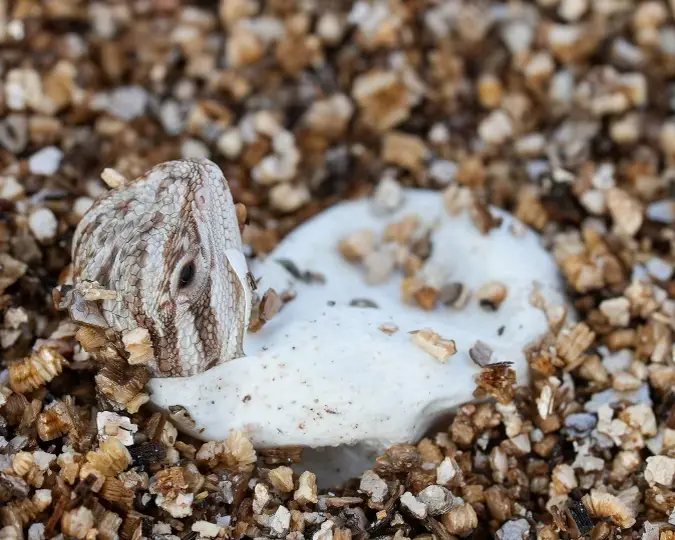
Welcoming a baby bearded dragon into your home is both extremely exciting and daunting. You’re probably feeling a bit overwhelmed. Maybe your mind is racing with questions like: What should I feed my new baby bearded dragon? How important is diet? Are some insects better for my dragon than others?
The Obvious: Diet Is Critical For Pet Health
Caring for a bearded dragon is extremely rewarding, but it’s not always easy. You will need to take careful care of your pet. As a responsible pet owner, you have an obligation to feed your pet a healthy diet. That’s why we’re so glad to you’re here. Let’s get started.
Some Studies estimate:
What this post covers:
- What insects are best for baby bearded dragons
- How often you should feed your baby bearded dragon
- A suggested feeding schedule
- An easy system for feeding your new pet
The Key Points of a Healthy Baby Bearded Dragon Diet
- Diversity is king:This is the most important point on this list. In their natural ecosystems, bearded dragons eat an extremely varied diet. Replicating this diet in captivity ensures your pet gets the nutrients it needs to be healthy, avoid illnesses, and live an enriched life. You should be feeding your dragon AT LEAST 3 different types of insects regularly.1
- Diet should be made up of primarily insects with occasional greens: Baby bearded dragons need high amounts of protein to fuel their rapid growth. This means roughly 90% insects and 10% greens. This can be a little hard to quantify, so stick around to the end for our recommended feeding schedule if you need some more help.
- Babies should be fed regularly: Twice a day is the standard. While more work, feeding your pet smaller meals more often helps replicate their natural environments, and provides steady nourishment for your hungry pet.2 3
- Live and fresh food is important: Don’t go for canned options, they simply don’t have the nutritional value of a well cared for feeder insect.4
Want to get the perfect diet delivered?
Sign up for our Baby Bearded Dragon Subscription and you’ll receive the following:
- A perfectly curated diet built by our experts
- A weekly food delivery containing 4+ insect types
- A healthy reptile without the extra work
Food Choices for Your Baby Bearded Dragon
Insect Options
- Dubia Roaches: An excellent and versatile feeder due to their exceptional nutritional make up
- Black Soldier Fly Larvae (BSFL): High in calcium, this is another excellent addition to any bearded dragons diet.
- Crickets: Frankly, we don’t love crickets. They stink, are loud, and can bite your pet (not kidding). But any list would be incomplete without them. We don’t recommend them for the above reasons, but they are a proven staple of the reptile world.
- Hornworms: High in water content, they are an excellent addition (in moderation) to a good diet
- Superworms: While you need to be careful with moderation, their high fat content provides ample energy to developing babies.
- Mealworms: With a similar nutritional content to superworms, they are sometimes avoided for baby dragons due to their hard exoskeleton. In moderation, they are an appropriate addition.
- Waxworms: High in fat, they are ok occasionally, but we think there’s better options to choose from.
- Discord Roaches: For those of you in Florida (where dubia roaches are not allowed), the discord roach is a great choice as a replacement.


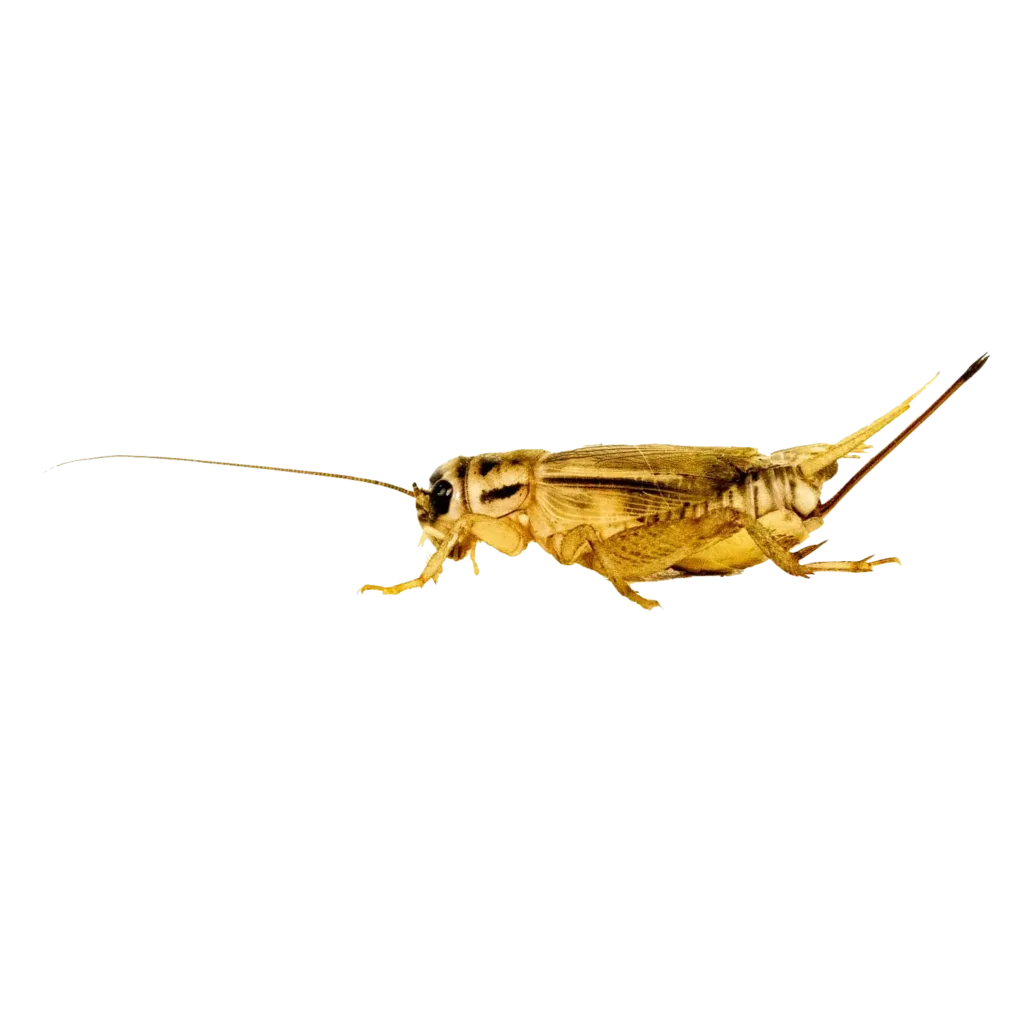
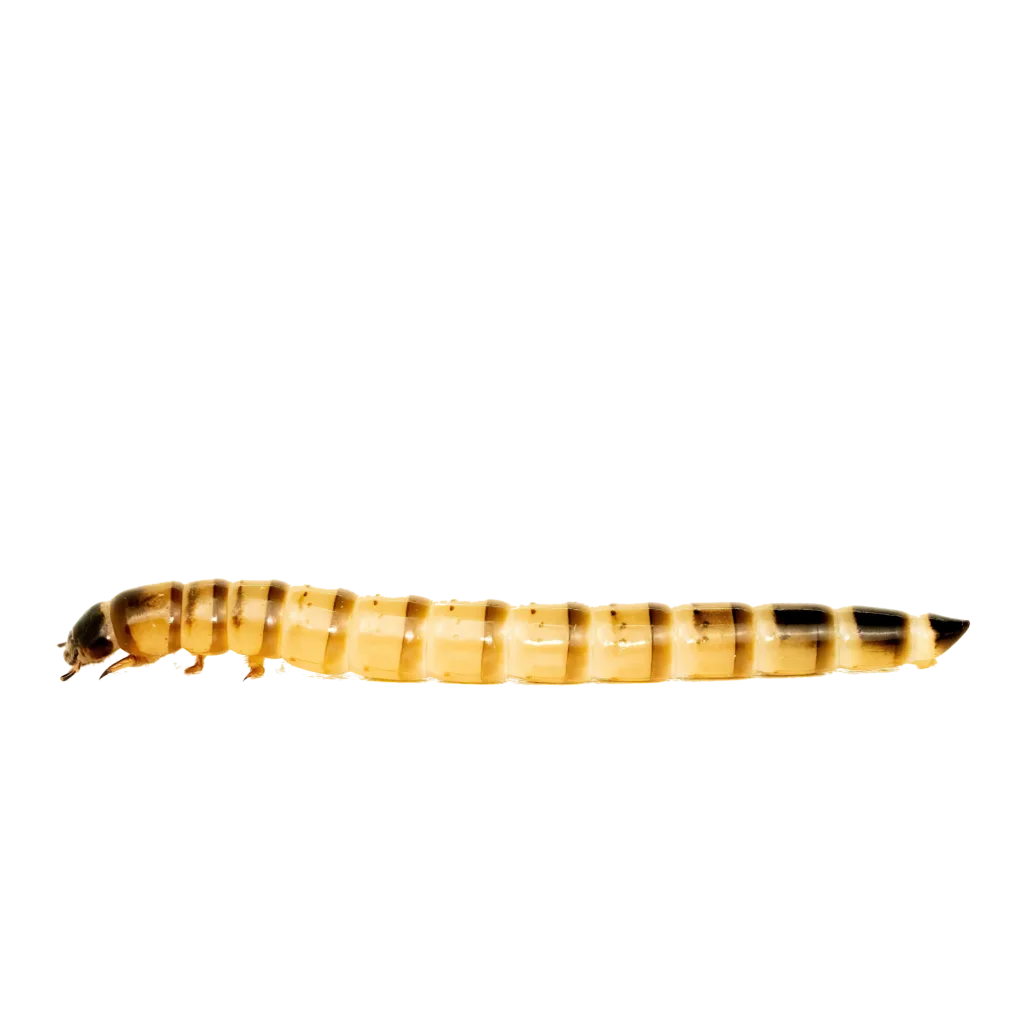
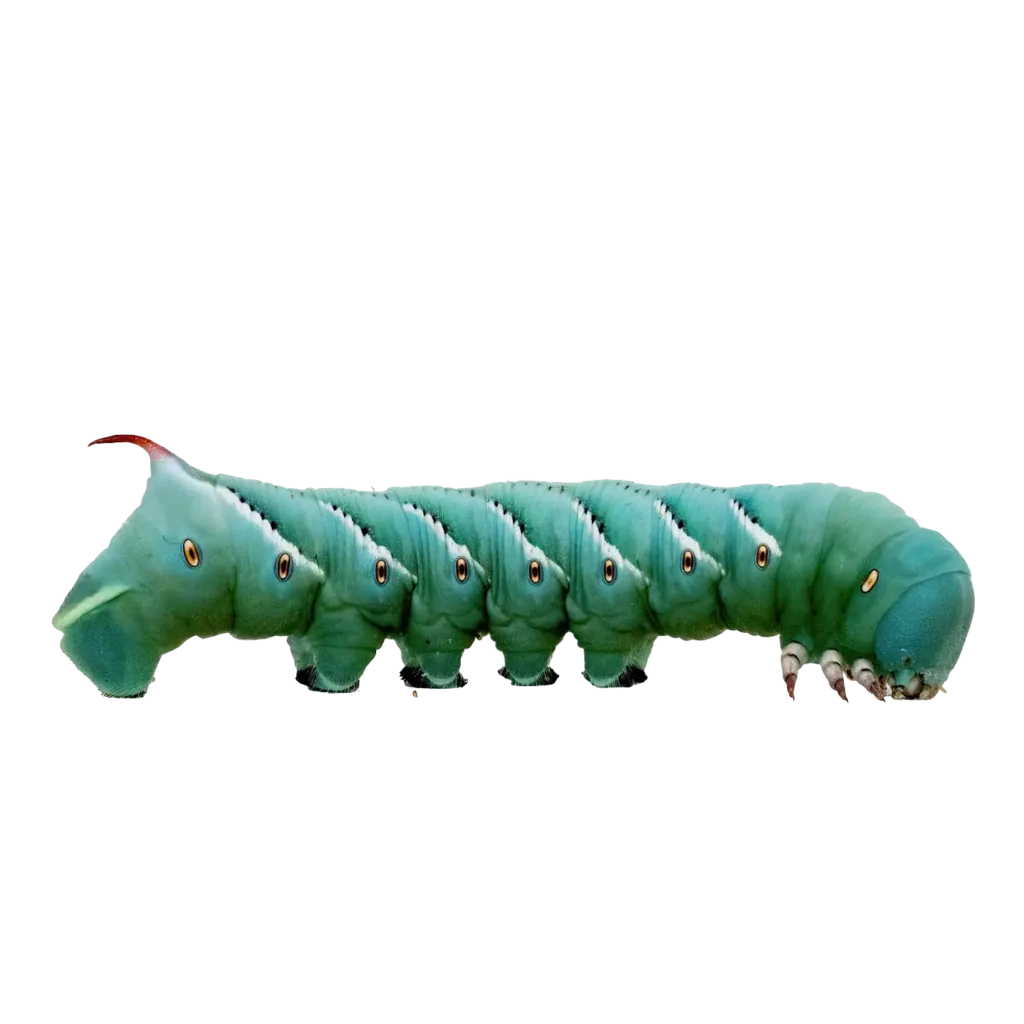
Plant Matter Options: Greens, Vegetables and Fruits
- Greens: Good greens are rich in nutrients like calcium, low in phosphorus, here are our favorites: alfalfa, dandelion, collard greens, mustard greens, kale, dark lettuces, romaine, and spinach. Switch things up as often as you can!
- Vegetables: A key addition for nutrients. We love finely chopped carrots, zucchini, and sweet potatoes.
- Fruits: Should be fed sparingly, less than 10% of the plant matter in your beardies diet. Great choices are strawberries, apples, and mango.
Foods to avoid When Feeding Your Bearded Dragon:
- Avoid feeding your dragon insects caught in the wild. As their source is unknown, they could contain pesticides or parasites.
- Avoid feeding iceberg/light colored lettuce, as it offers little to no nutritional value
Creating a Feeding Schedule
- Your dragon’s diet should contain AT LEAST 3 different types of insects7
- The bulk of your pet’s insect requirements should be met by low fat, high in protein choices. We recommend: Dubia Roaches, Black Soldier Fly Larvae (BSFL), and hornworms.7
- The reminder of your pet’s insect requirements can be filled in with other options to provide the complete nutritional requirements. We love: superworms and mealworms.7
- As explained, greens are less important for babies, but select a few options for greens, vegetables, and fruit that are easily accessible for you.
- Your baby dragon should eat insects everyday, some experts recommend two or more smaller feeding sessions.8
- Your baby dragon should be offered greens at least once a day
How do I know how much to feed my baby bearded dragon?
Every dragon is different. Some will have voracious appetites, while others not so much. What’s important in the early part of your bearded dragon’s life is ensuring they have access to the nutrients they need to develop properly.
The scientific literature suggests a baby bearded dragon (between 0-3 months in age weighing less than 30 grams) needs around 1 calorie a day.
Now, some industry ‘experts’ will claim this isn’t enough. These guys just want you to open your wallet and buy as many feeders as you can from them. Here at HerpCare, your pet’s health is our priority. We’ve done careful research and a great deal of science backed worked to arrive at these values. If you want to see for yourself, you can follow our research here.
Now, here’s what this means. For reference one calorie a day is:
- Around 15 small dubia roaches
- Around 12 medium sized BSFL
- Around 1 small sized hornworm
It’s important to note that these are estimates. All bearded dragons are different, and feeder insects come in different sizes/nutritional value depending on the source. Most experts agree during the neonate (baby) and juvenile stages, overfeeding is likely better than underfeeding.7 Your focus should be proving sufficient quantity and quality in the form of diversity.
A sample feeding schedule for your baby bearded dragon:

An Easy Solution For Feeding Your Baby Bearded Dragon the Perfect Diet
Time for our shameless plug. If you’re short on free time or want to keep your pet healthy without a ton of extra work, we’ve got you covered. Check out our weekly baby bearded dragon food subscription. Each week you’ll receive a carefully curated package full of high quality and diverse feeder insects. No need to worry about quantity, or what insect types to buy, just feed your dragon everything in your delivery. Reptile care made simple.
Monitoring and Adjustments
Always pay attention to your dragon’s behavior, weight, and overall health. If they seem disinterested in certain foods or show signs of distress, consider consulting a vet. Regular weigh-ins can also help track their growth and health.
The Importance of Hydration
- While bearded dragons obtain much of their hydration from their food, they still require water.
- A shallow water dish should always be available. Make sure it’s shallow to prevent drowning.
- Misting your dragon occasionally can also assist with hydration and help during shedding periods.
Best Wishes!
Raising a healthy baby bearded dragon involves understanding their dietary needs and making adjustments as they grow. This guide serves as a starting point. Whether you decide to do it yourself, or with the help of our experts here at HerpCare, your dragon’s health and happiness are well worth the effort!
Other Resources
Citations
Oonincx, D., Van Leeuwen, J. P., Hendriks, W., & Van Der Poel, A. (2015). The diet of free-roaming Australian Central Bearded Dragons (Pogona vitticeps). Zoo Biology, 34(3), 271–277. https://doi.org/10.1002/zoo.21209
Feeding Bearded Dragons | VCA Animal Hospital | VCA Animal Hospitals. (n.d.). Vca. https://vcahospitals.com/know-your-pet/bearded-dragons-feeding
Raiti, P. (2012). Husbandry, Diseases, and Veterinary Care of the Bearded Dragon (Pogona vitticeps). Journal of Herpetological Medicine and Surgery, 22(3), 117. https://doi.org/10.5818/1529-9651-22.3.117
Nijboer, J. (2023, July 19). Nutrition in reptiles. Merck Veterinary Manual. https://www.merckvetmanual.com/management-and-nutrition/nutrition-exotic-and-zoo-animals/nutrition-in-reptiles
Bearded Dragon Food Pyramid. (n.d.). Complete Critter. https://www.completecritter.com/bearded-dragon.html
Young, C. (2023). Conversation with Center For Snake Conservation.
Deczm, M. a. M. D. P. M. (2022, October 27). Diversity is the key to success with reptile diets. DVM 360. https://www.dvm360.com/view/diversity-is-the-key-to-success-with-reptile-diets
Raiti, P. (2012b). Husbandry, Diseases, and Veterinary Care of the Bearded Dragon (Pogona vitticeps). Journal of Herpetological Medicine and Surgery, 22(3), 117. https://doi.org/10.5818/1529-9651-22.3.117
Warwick, C. (n.d.). Reptilian welfare in a biological context. University of Portsmouth.
